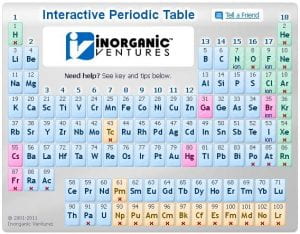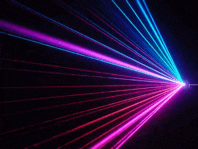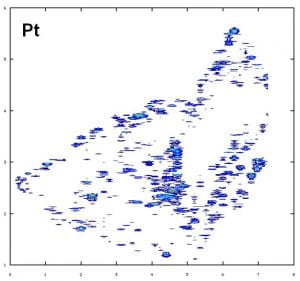ICP-MS Sample Prep: valuable information about acids, microwave digestion, calibration standards, and metal free supplies.
Laser Ablation: information about tissue and gel preparation for LA-ICP-IMS.
Laser Safety: all QBIC users will need to complete laser safety training with ORS.
ICP-MS Sample Prep
 Acids
Acids
All samples will be completely digested in acid prior to running on the ICP. Refer to the Inorganic Ventures: Interactive Periodic Table for specifics on dissolving your element of interest. You will typically need trace metal grade HNO3 and in some cases a 1:1 mixture of HNO3 and HCl. Some metals require HF to dissolve, but please use caution when working with HF and always inform QBIC staff when bringing HF into the lab.
Microwave Digestion
If you are having trouble digesting your samples using a conventional hot plate, visit the Instruments page for information on how to quickly dissolve tissue sections and materials using Microwave Digestion. If you have a large number of tissue samples, you will want to purchase Teflon digestion tubes.
Standards
Common Vendors:
Internal Standards: Best practices dictate that internal standards should be selected with a mass that is within 60 mass units of your element. For example: You are interested in silver (mass 108), so you will choose yttrium (mass 89) and indium (mass 115) as your internal standards.
Calibration Standards: 10 ug/mL (or 10 ppm) stock. Prepare multiple standards up to 100 ppb, including a blank. The detection limit for the ICP-MS is typcially in the part-per-trillion range, unless you are interested in common elements (Mg, Ca, Fe, Cu, Zn, etc.) which typcially have a detection limit in the sub-ppb range.
Metal Free Tubes and Materials
It is a good idea to use metal free tubes, tips, bottles, and other materials for ICP-MS analysis. These include: 15/50mL Centrifuge tubes, clear pipet tips, and Teflon bottles.
Laser Ablation
The LA sample chamber can accommodate either a large solid sample (up to 2 cm thick) or a glass microscope slide. The microscope slide will have to be trimmed (with a glass cutter) to approximately 1 inch by 2 inches.
Tissue Sections
Frozen Samples:
Tissue will be fixed by perfusion for 8-24 hours using 20x volume of fixative to tissue (brain will need longer fixation). Treating the tissue with a sucrose gradient allows for easier section cutting by cryoprotecting tissue (use 10% to 30% sucrose O/N). Place your tissue in a cryomold containing OCT (optimal cutting temp) media with NO BUBBLES and orient tissue (remember the initial cutting surface is the base of the mold). Freeze on a bed of dry ice within a beaker containing cold isopentane (2-methyl butane). The cryomold will float in the isopentane (do not submerge). Samples can be stored at -80°C until ready to section. (Protocol developed by the Microscopy Core at Gladstone Institute)
Fixed Samples:
Tissue will be harvested as usual and fixed in at least 10x volume of formalin in PBS. Tissue can be stored at 4°C until sectioning.
Sectioning:
Tissue can be submitted for sectioning at the Mouse Histology And Phenotyping Core Laboratory downtown. Contact Donna Emge at d-emge@northwestern.edu or 312-503- 2679 to schedule your embedding, sectioning and mounting. All sections for LA-ICP-MS analysis should be 10-20 µm thick and unstained. It is useful to have adjacent sections stained by H&E for comparison (discuss this with the MHPL staff).
Native Agarose Gels
The gel agarose percentage and gel thickness must be optimized for high resolution separation of your protein bands. For the example in Science, the optimal gel concentration was 0.8 % w/w agarose and the optimal dimensions were 8 cm x 5.5 cm x 0.3 cm. Your running buffer will also be optimized for your proteins of interest. For the separation of Atx1-TM complex and Ccc2a, the running buffer was 20 mM Tris-HCl and19.2 mM Glycine at pH 8.5. At this pH, Atx1 migrates towards the anode and Ccc2a towards the cathode. Your gel may be Coomassie stained to locate protein bands; however, all solutions should be analyzed for metal content. The identity of the proteins present can be confirmed by ESI-MS.
Gels must be bound and dried prior to LA analysis. To do this, the gel is transferred between two sheets of cellophane which are about 3-4 cm longer than then gel. The excess solution is removed carefully, paying special attention not to break the gel or leave air bubbles. The bound gel is then placed between 3 layers of pure cellulose chromatography paper (0.19 mm thickness). Approximately 2 kg of weight are placed then on top of the gel and chromatography paper, and after 1 h, the paper sheets are replaced with fresh ones. The weight has to cover the entire gel surface to obtain uniformly dried gels. At least two more paper changes every hour, before leaving the gel to dry overnight worked best. If the gel is still not completely dry after 24 h, replace the chromatography paper and continue. The dried gel is now ready for LA-ICP-MS analysis. (Protocol developed by Dr. Monica Canalizo).
Laser Safety
 Basic Laser Safety Awareness Training with ORS
Basic Laser Safety Awareness Training with ORS
Every person using QBIC’s confocal microscopes are required to complete the Office for Research Safety’s Basic Laser Safety Awareness training. This Laser Safety training is good for one year, and re-training will be required after that. Visit the ORS website for more information. This is a Blackboard course for which you can register on the ORS website. If you are renewing your Laser Safety training, you have the option to take the Advanced Laser Safety Awareness Training if you want.
Laser Safety Registration in ISIS
New User
Once you have completed the laser safety course, you will now need to register on ISIS. In ISIS, you will select ‘lab worker’ and your Principle Investigator. Then under ‘ORS Forms,’ you will locate ‘Laser Operator Registration.’ You will create a new Registration form and when it asks for the Investigator/Supervisor who is responsible for the laser, you will choose QBIC from the list. (This is very important so pay close attention). When you have completed the registration form, Becky or Tom will e-sign the form and you will be approved by ORS for using lasers in QBIC.
Existing User/ Renewing Registration
You already have a form created under QBIC. In ISIS, go to ‘ORS forms’ then to ‘Laser Operator Registration.’ Go to ‘Edit’ and review the information. Then you will see a button next to QBIC saying, ‘Submit to ORS.’
Consumables & Other Materials
Tubes/Containers
Click link for a description of the chemical compatibility of container materials.
High Density Polyehtylene (HDPE) is the best choice for wash bottles Trace Clean HDPE Wash Bottles, Regular HDPE Wash Bottles.
For most elements Standard Polypropylene Tubes are sufficient.
For more abundant elements such as Fe, Ca, and especially Zn Metal Free Polypropylene Tubes are highly recommended.
Important note: most colored plastics use zinc as fillers and will therefore give you artificially high Zn concentrations.

